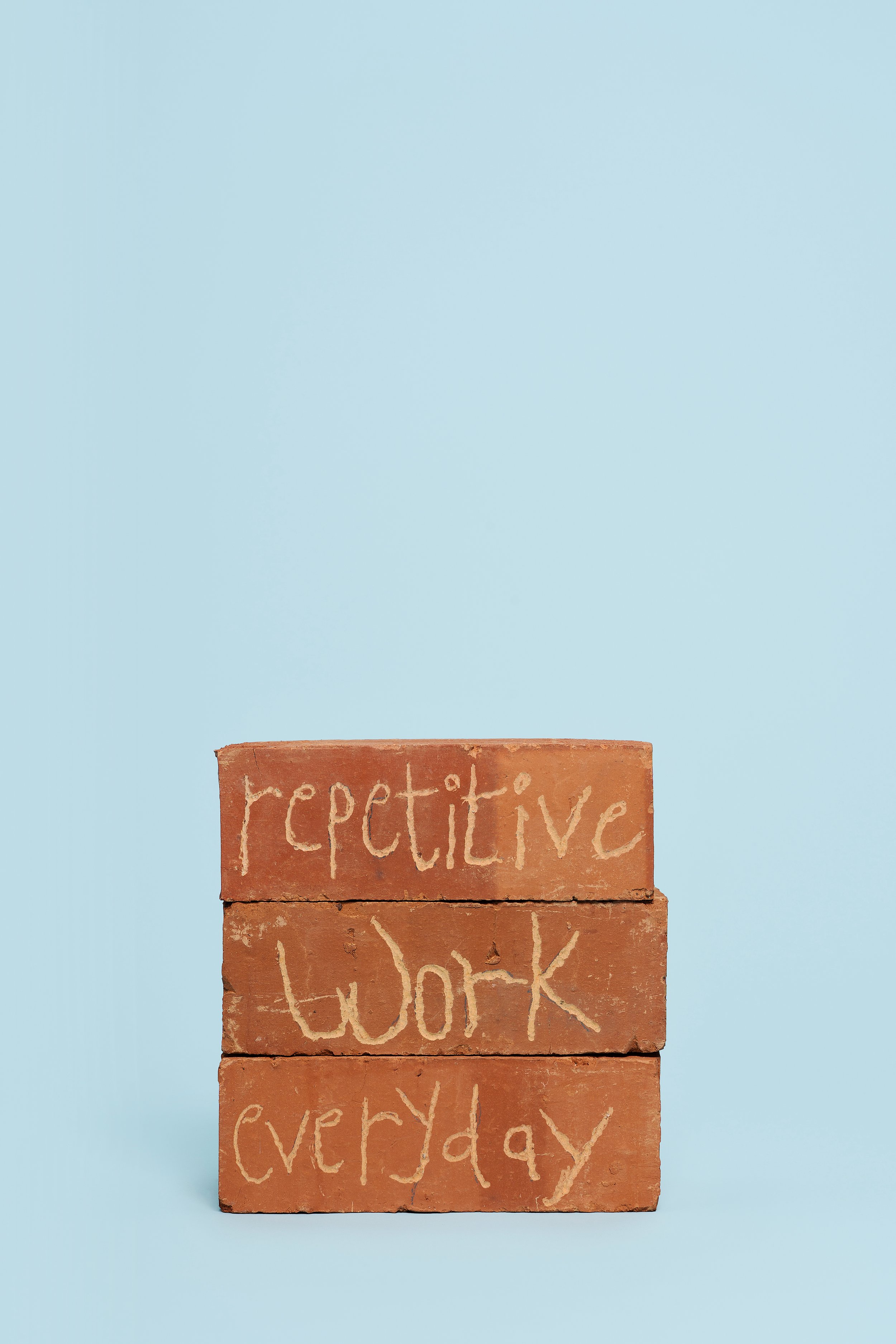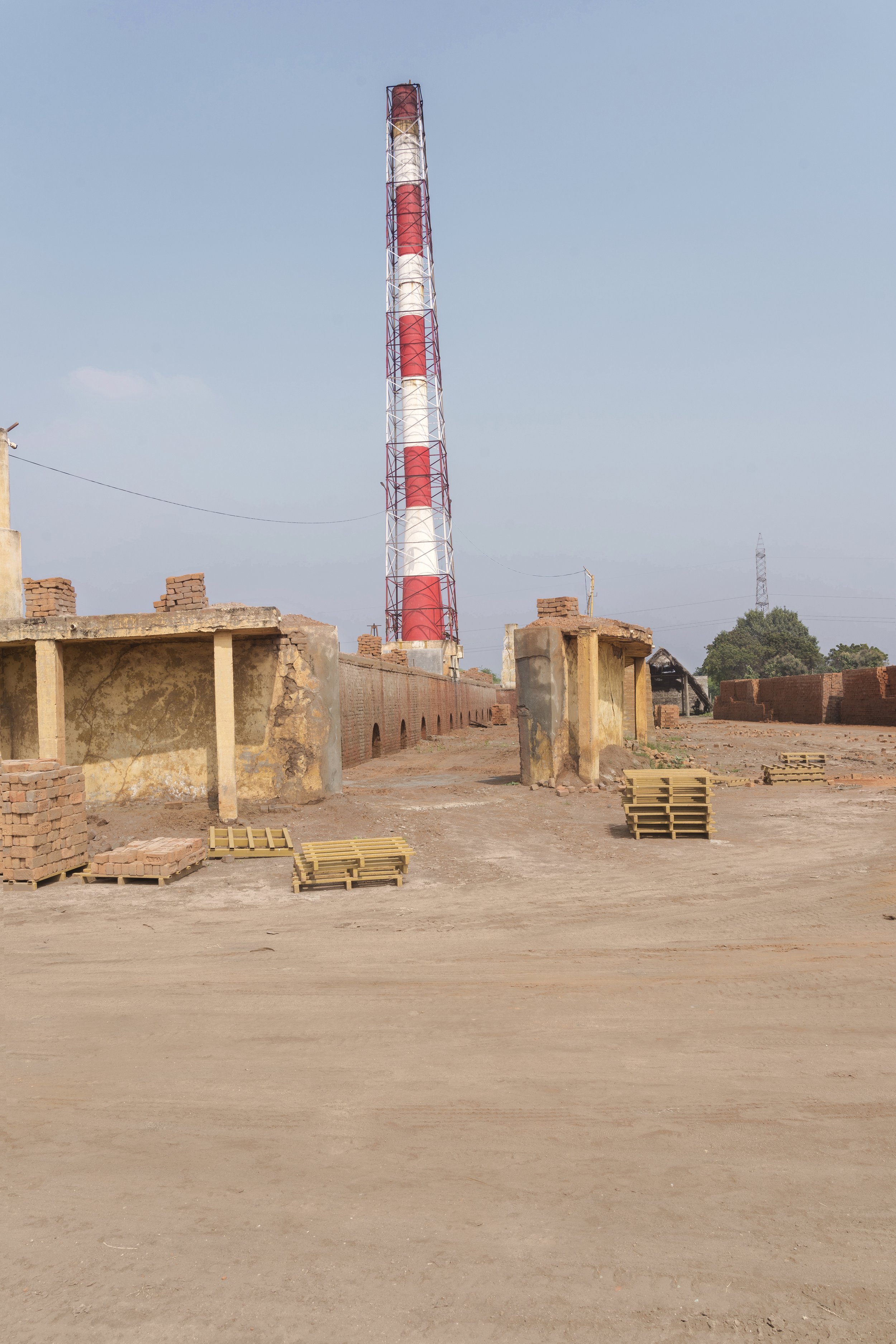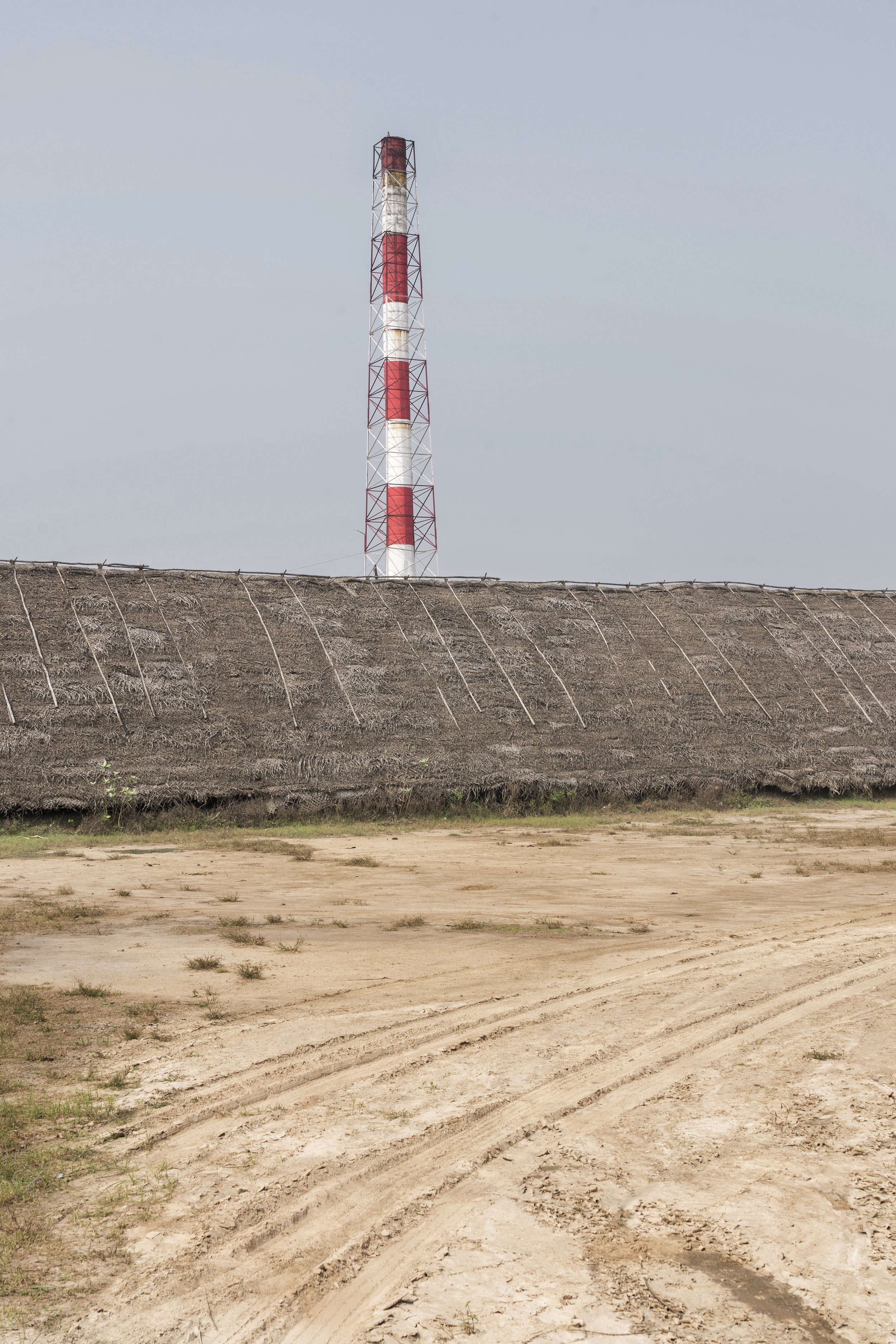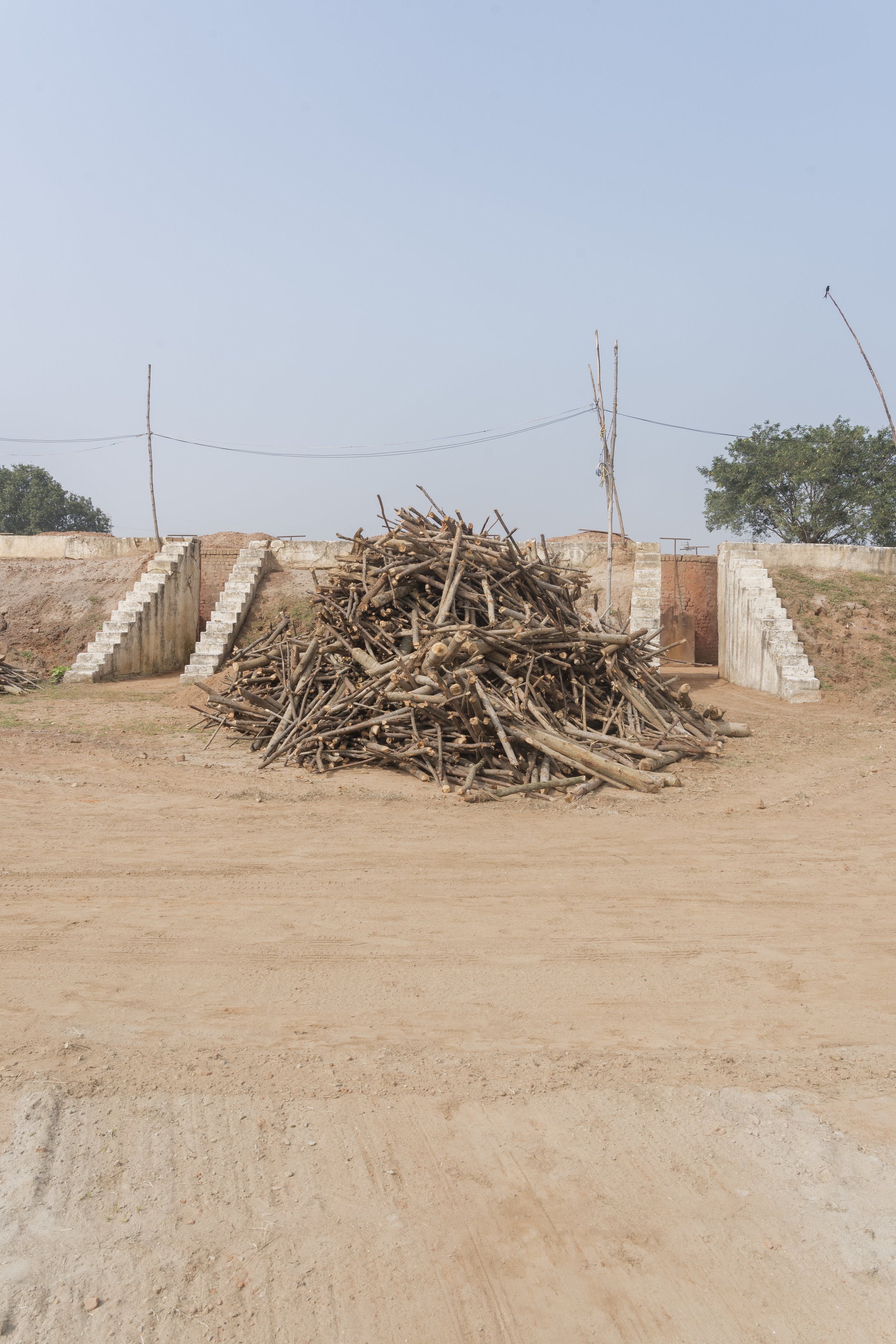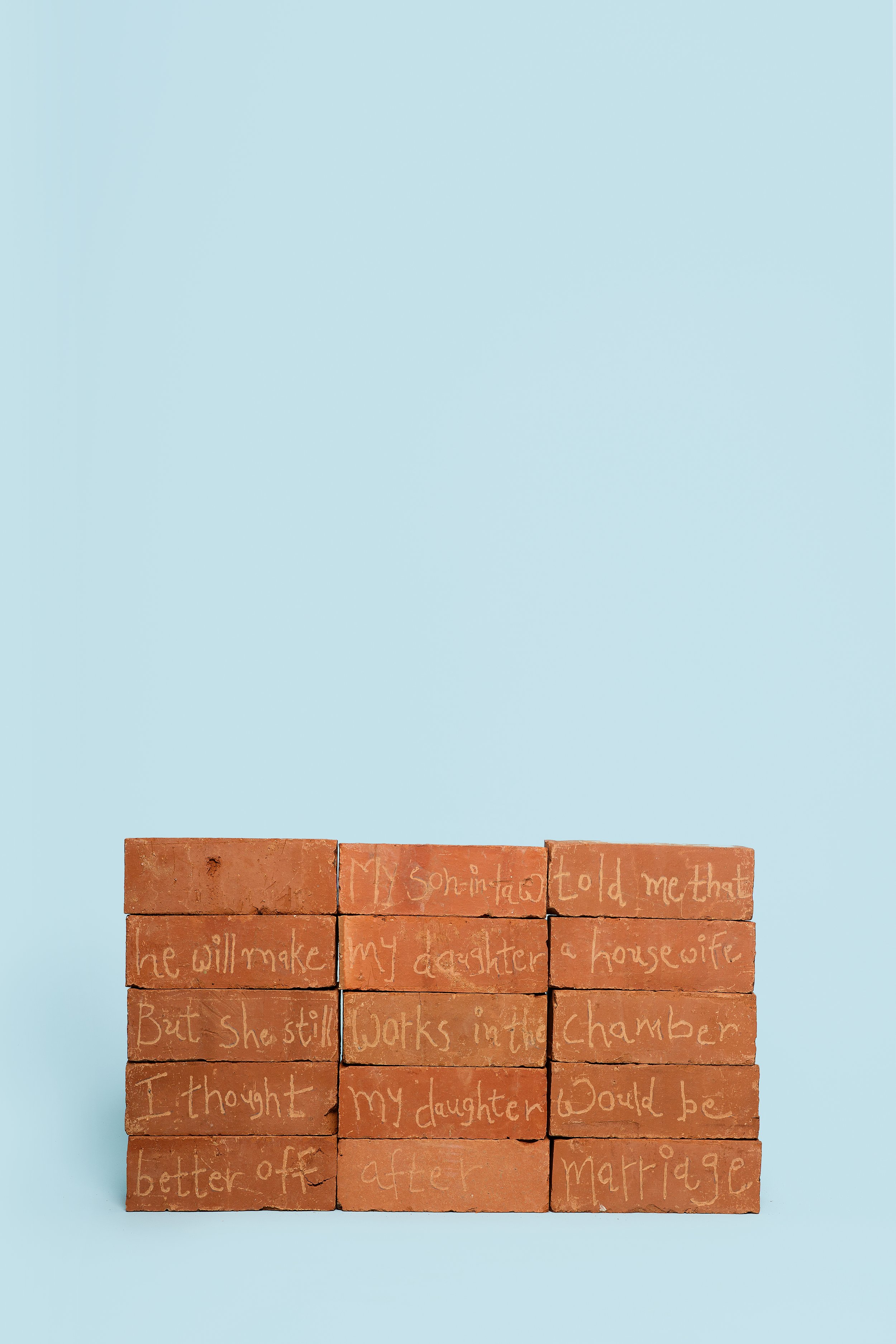BrickWork
By Chinar Shah
BrickWork is a result of interactions with brick workers in two villages in Tamil Nadu with radically different geographical conditions, over the course of 2021 – 2022. Brick work in Tamil Nadu is entrenched in caste hierarchies, and most brick workers live in what is commonly known as ‘colonies’— a separate living arrangement for Dalit communities.* The images attempt to portray caste-based debt relations, working conditions, access to basic necessities, and the emotional journeys of rural debt after the outbreak of COVID-19 and the resultant lockdowns. Centered around women’s experiences of debt and brick work, these disembodied images bring together text and image to visualize the landscape of debt.
*The caste system in India is a discriminatory practice that privileges being born in certain sections of the society. There are mainly four castes in the Indian hierarchy system and the dalits and tribals are outside the caste system. In a caste-based social arrangement, hierarchies are set based on birth and there is no possibility of mobility between different stratas. Those outside the caste system are crudely known as the ‘untouchables’. Dr. B. R. Ambedkar (b.1891), a social reformist, promoted the term ‘dalit’, a political name for the untouchables, which means ‘the oppressed’. In the context of Tamil Nadu, another important figure is Periyar (b. 1879), a revered social activist who fought against the caste system. Since the icon of Ambedkar has been popularized in public visual culture, the colonies often have painted pictures of Ambedkar to mark the struggles of those outside the caste system.











